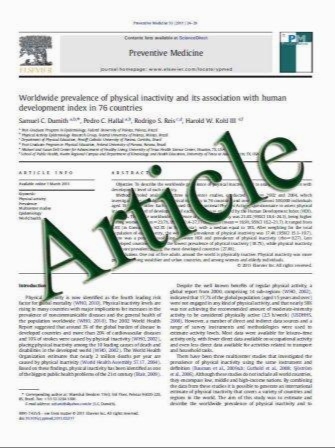Prevalence of risk factors for fractures and use of DXA scanning in Danish women. A regional population-based study
- نوع فایل : کتاب
- زبان : انگلیسی
- مؤلف : K. H. Rubin & B. Abrahamsen & A. P. Hermann & M. Bech & J. Gram & K. Brixen
- چاپ و سال / کشور: 2010
Description
Summary To determine the relationship between risk factors and use of DXA scans. Our study showed a relatively high use of DXA in low-risk women and the relatively low coverage in women with multiple risk factors. Moreover, distance to DXA clinics, age, and socio-economic factors are associated with the use of DXA. Introduction To determine the relationship between risk factors for fracture and use of DXA scans in Danish women in relation to distance to DXA clinics and socio-economic factors. Methods From the Danish National Civil Register we randomly selected 5,000 women aged 40–90 years living in the region of Southern Denmark to receive a mailed questionnaire concerning risk factors for fractures. Results The respondents rate was 84% and 77% of the invited population were available for analysis. A total of 10.3% of the women without risk factors and only 36% of the women with three or more risk factors had a history of DXA. The likelihood of a history of DXA was higher with increasing FRAX(™) 10-year risk; i.e., 8.7% and 30.2% in patients with a 10-year fracture risk of 0–14.9% and 25–100%, respectively. In women with less than 10 km to nearest DXA facility, 20.2% had a history of DXA, while 11.5% of those with more than 40 km to the nearest scanner had a history of DXA. Logistic regression analysis showed that distance, fracture risk, oral glucocorticoids, low-energy fracture, conditions associated with secondary osteoporosis, low BMI, history of falls, age 65–79 years, spouse status, and income were significantly associated with having a history of DXA. Conclusions Our study showed a relatively high use of DXA in low-risk women and the relatively low coverage in women with multiple risk factors. Moreover, distance to DXA clinics, age, and a number of socio-economic factors are associated with the use of DXA.
Osteoporos Int (2011) 22:1401–1409 DOI 10.1007/s00198-010-1348-5 Received: 26 May 2010 / Accepted: 28 June 2010 / Published online: 4 August 2010


